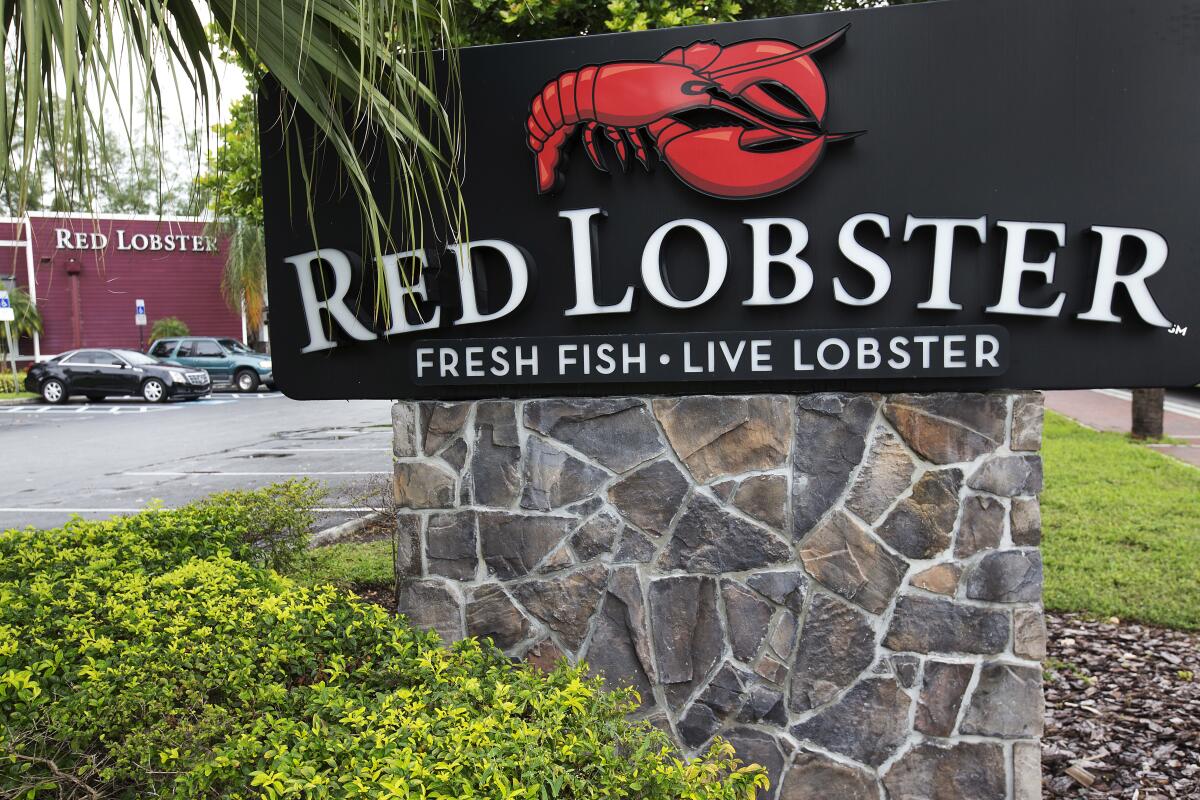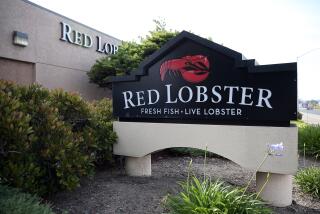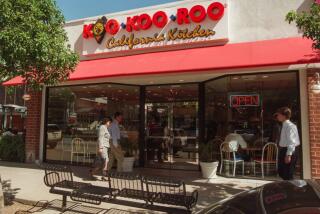Red Lobster offered customers all-you-can-eat shrimp. That was a mistake

Red Lobster promised customers an endless supply of shrimp for $20 — a gamble the struggling restaurant chain hoped would help pull it out of its pandemic doldrums.
But Americans, and their appetites, had other plans.
The beloved yet beleaguered pillar of casual dining abruptly shuttered dozens of locations this week, heightening speculation that the chain is careening toward bankruptcy.
Although its dire financial situation isn’t the result of a single misstep, executives at the company that owns a large stake in the chain, as well as industry experts, said that miscalculations over the popularity of the all-you-can-eat shrimp special accelerated the company’s downward spiral.
The closures, including at least five locations in California, were announced in a LinkedIn post Monday by Neal Sherman, the chief executive of a liquidation firm called TAGeX Brands, which is auctioning off surplus restaurant equipment from the shuttered locations.
Representatives for Red Lobster did not respond to a request for comment about the closures, which were listed on its website as temporary, or whether it planned to file for bankruptcy.
But company executives have been vocal about the misguided gamble with shrimp and how they misjudged just how hungry Americans would be for a deal on the crustaceans.
In an effort to boost foot traffic and ease the sales slump that swept through the restaurant industry during the pandemic, Red Lobster executives last year decided to relaunch a popular marketing ploy from years past to lure customers: For $20 they could eat as much shrimp as they wanted.
Eager for a deal during an era of high inflation, many consumers eagerly embraced the offer as a challenge. People took to TikTok to brag about how many of the pink morsels they could put down in a sitting — one woman boasted she’d consumed 108 shrimp over the course of a 4-hour meal.
“In the current environment, consumers are looking to find value and stretch budgets where they can,” said Jim Salera, a research analyst at Stephens, who tracks the restaurant industry. “At $20, it’s very possible for a consumer to eat well past the very thin profit margin.”
During a presentation about sales from the third quarter of last year, Ludovic Garnier, the chief financial officer of Thai Union Group, a seafood conglomerate that has been Red Lobster’s largest shareholder since 2020, cited the endless shrimp deal as a key reason the chain had an operating loss of about $11 million during that time frame.
“The price point was $20,” Garnier said.
He paused.
“Twenty dollars,” he repeated with a tinge of regret in his voice. “And you can eat as much as you want.”
Although the promotion boosted traffic by a few percentage points, Garnier said, the number of people taking advantage of the offer far exceeded the company’s projections. In response, they adjusted the price to $22 and then $25.
All-you-can-eat offers can be effective marketing strategies to get people in the door in the competitive world of casual dining — Applebee’s offers $1 margaritas dubbed the Dollarita, buffet chains such as Golden Corral and Sizzler promise abundance at a flat rate, and Olive Garden, one of Red Lobster’s main competitors, has long lured customers with unlimited salad and bread sticks.
But Red Lobster made a few crucial missteps with the shrimp deal, said Eric Chiang, an economics professor at University of Nevada, Las Vegas, and a self-proclaimed buffet aficionado.
The company not only started with a low price point, but offered a prized and pricey menu item that can serve as an entire meal — not many customers at Olive Garden, he noted, are going to stock up on bread sticks and salad alone.
“Most people will also order the Taste of Italy,” he said, “or something that gives you meat and pasta.”
Chiang said the most effective loss leaders, a term for products that aren’t profitable but bring in enough new customers or lead to the sale of enough other items to make the offer worthwhile, use cheap ingredients. A good example is 7-Eleven’s Free Slurpee Day, he said, as the company gives away about 15 cents of ice and syrup to customers who then pay to fill up their gas tanks.
Consumers are especially drawn to all-you-can-eat deals and buffets during tighter economic times, Chiang said.
“This is a story of inflation,” he said. “All you can eat for $15? That gives customers a sense of control. Like we’re not being gouged, not being nickel and dimed for every dessert.”
Red Lobster, it turns out, has been in trouble for a while.
In 2003, the chain, which at the time was owned by Darden Restaurants, the parent company of Olive Garden, offered a similarly disastrous all-you-eat crab special for around $23.
So many people came back for seconds, thirds and even fourths, executives said at the time, that it cut into profit margins. Before long, the company’s then-president stepped down.
In 2014, after a period of disappointing sales and less foot traffic, Darden sold Red Lobster to San Francisco private equity firm Golden Gate Capital for more than $2 billion, a stake that was eventually taken over by Thai Union.
Despite the turmoil, the company, which until this week touted about 700 locations, remained a brand so beloved that it earned a reference in Beyonce’s song “Formation,” in which she describes post-coital trips to Red Lobster.
After the song’s release, the company said it saw a 33% jump in sales, but that glow was short lived and had faded long before the ill-fated shrimp deal was brought back last year.
“You have to be pretty close to the edge for one promotion to tip you over the edge,” said Sara Senatore, a senior analyst at Bank of America, who follows the restaurant industry.
In January, Thai Union Group — citing a combination of financial struggles it pinned to the pandemic, high labor and material costs and the oft-cited buzzword of industry “headwinds” — announced plans to dump its stake in the company, which was founded in 1968 in Lakeland, Fla. The closures this week hit at least five California locations — Redding, Rohnert Park, Sacramento, San Diego and Torrance — according to the website of the liquidation company, which posted images of available items, including a lobster tank, seating booths, refrigerators and a coffee maker.
During a presentation to investors in February, Thiraphong Chansiri, the chief executive of Thai Union, expressed frustration with the situation surrounding Red Lobster, saying it had left a “big scar” on him.
“Other people stop eating beef,” he said. “I’m going to stop eating lobster.”
More to Read
Inside the business of entertainment
The Wide Shot brings you news, analysis and insights on everything from streaming wars to production — and what it all means for the future.
You may occasionally receive promotional content from the Los Angeles Times.











